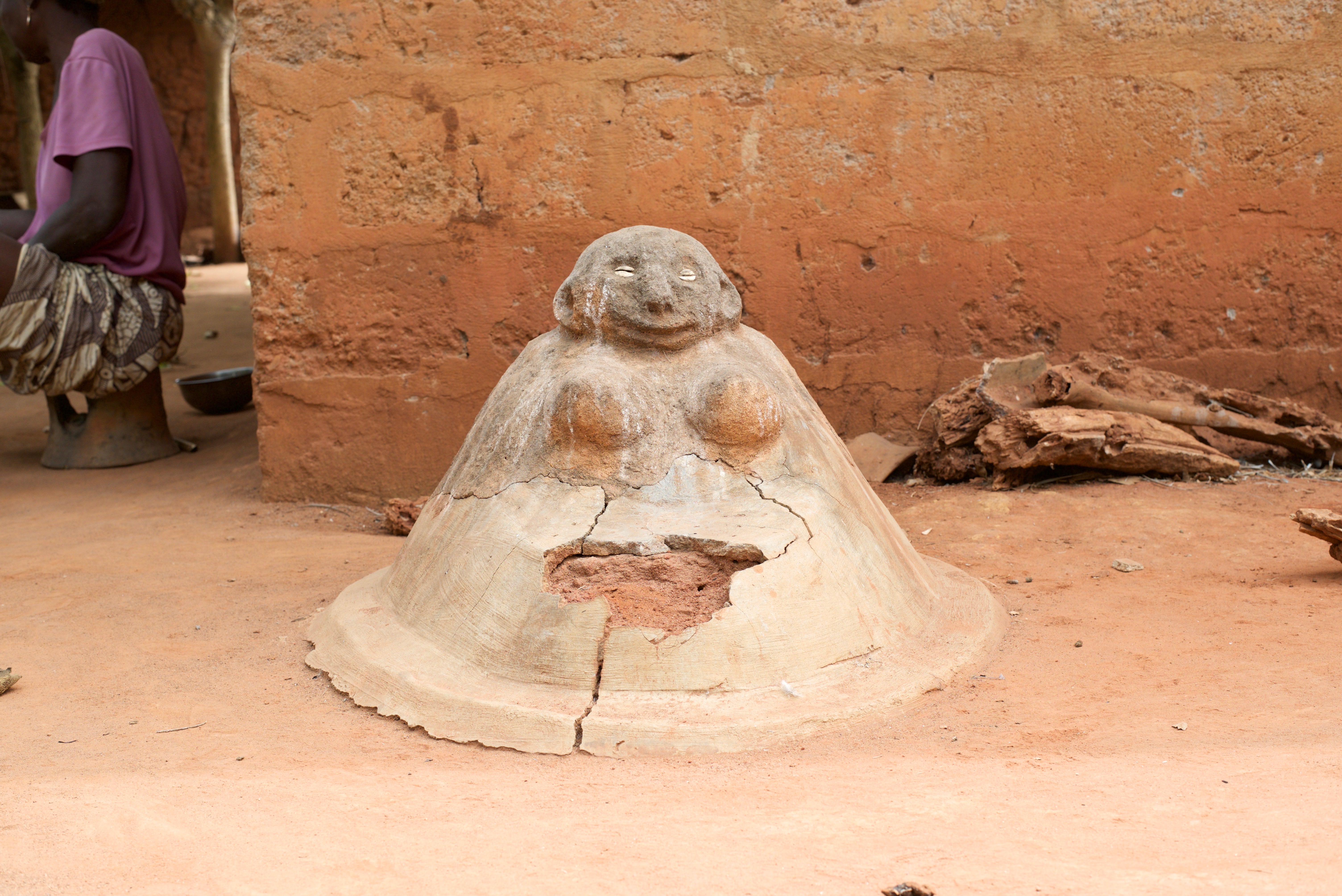King Houdekpinkou
|
King was born in 1987 in France to a Beninese mother and father. King grew up in the suburbs of Paris where his childhood was highly influenced by the Japanese pop culture imported to France in the 1990s (e.g. anime, video games, manga). Thus, during his younger years, he cultivated a passion for Japan. This passion for the Land of the Rising Sun followed him throughout his adolescence and is still vivid today, as he continues to visit Japan every year. |
|||
|
One of these cities captured his attention: Bizen, where he subsequently went every year to complete his training in pottery started that same year in Paris. These trips allowed him to acquire field experience with the potters of the Keramosgroup and more particularly with the ceramist Toshiaki Shibuta, who became not a mentor but: a “father of clay”, in his own words. In Bizen, King was struck by the ceremonial approach adopted by his potter friends to make their creations, whose foundations are based on the work of earth and fire. |
This creative process gives rise to works of raw aesthetics, covered with a natural glaze of wood ash. Their practice seems to be infused with Shintoism spirituality and echoes the animist traditions of the Voodoo cult of King’s Beninese origins. According to him, both beliefs seek a transcendental relationship between man and nature to guide our existence. This revelation convinced him to leave his first life path so to fully devote himself to ceramics, which would become first a personal, and then an artistic quest. |
||
| From this experience was born Terres Jumelles in 2016 (“Twin Soils” in English), a cultural program aiming to unite Benin and Japan through the practice of traditional and contemporary ceramics. Clay embodies a universal material for cultural dialogue, inviting Beninese and Japanese ceramists to share their experiences in order to highlight the unifying and human values of ceramics. Today, King has developed a practice that blends tradition, spirituality and visceral work |
of the material. By questioning the porous boundaries separating craft from art today, he creates work at the crossroads between his personal history and the universal narrative of clay work. While he expresses a deep respect for the tradition of ceramics (whether artistic or artisanal), King still creates works that are resolutely contemporary and modern in their execution (i.e. glazing technique, high temperature electric firing, shapes). |
||
|
The “anatomy” of some works consists of containers shaped separately on the potter’s wheel (e.g. vases, cups, bowls, dishes), then assembled together to form a sculptural piece with vivid textures. Although built on a base of simple forms, some of his creations seem “tortured” and “disfigured” by an overload of dense materials, a heap of superimposed matte, shiny, and metallic drips. |
They visually represent the accumulation of stories and events that preceded them and from which they derive. If we look at some of the details, we notice a thick enveloping “skin”, thorns similar to those found on ritual pots in West Africa. They are reminiscent of certain attributes of plants and animals whose spikes or thorns give them almost divine protection, thus giving them a sacred status. | ||
|
|
|||
|
|||
|
|
|||













